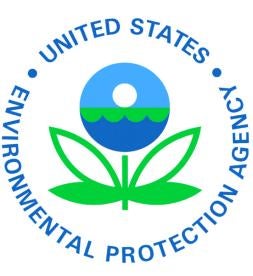While much of the focus on the United States Environmental Protection Agency’s (“EPA”) Clean Power Plan (“CPP”) relates to its impact on utilities and other energy providers, manufacturers and other large electricity consumers are understandably concerned about the CPP’s impact on their electricity bill. While these large consumers could see substantially higher electric rates as a result of the CPP’s implementation (assuming it survives judicial review), they may also be required and/or incentivized to help offset these costs by implementing demand-side energy efficiency (“EE”) measures. Although the final CPP places less emphasis on demand-side EE than the original proposed rule from 2014, the final plan still anticipates meeting its ultimate carbon emission reduction goals by using a healthy dose of demand-side EE. Whether this demand-side EE will be regulatorily required or merely incentivized depends primarily on the state in which you operate, meaning manufacturers and other energy consumers have strong incentives to get involved in the state-level CPP conversations going on across the country right now.
Demand-Side EE Under the CPP: An Overview
In 2014, EPA proposed that demand-side EE would be one of four “building blocks” utilized to establish the CPP’s carbon reduction goals, along with a shift from coal to natural gas electricity generating units, increasing fossil fuel plant efficiency, and expanding zero-emission power sources, such as renewables. This “building block” status was removed in the final CPP, perhaps in an attempt to make the CPP more legally defensible (discussed more here). Instead, the final CPP relies on demand-side EE in two ways: (1) by encouraging states to adopt demand-side EE as a path to compliance with mandated state carbon emission reduction goals, which may result in mandated EE measures; and (2) by incentivizing demand-side EE in both the proposed federal plan for implementing the CPP in states that do not adopt a state plan, and in the proposed model trading program rules EPA proposed as presumptively approvable state plans. These potential requirements and incentives may be present under both mass-based programs (those that give the state an overall carbon emission “budget” that cannot be exceeded) and rate-based programs (which impose carbon emission rate limits on electricity generating units on a per-megawatt hour basis).
Potential Regulatory Requirements
EPA abandoned demand-side EE as a building block for establishing the final CPP carbon emission reduction requirements, and the agency is not imposing EE measures as a regulatory requirement for those states that are ultimately subject to a federal plan. Accordingly, the most likely scenario for mandated demand-side EE measures is a state’s adoption of a plan (either mass-based or rate-based) that includes such measures as an element of meeting the state’s required carbon emission reduction goals. Among other requirements, these mandates could take the form of permit limits, required participation in state-sponsored EE programs, or by including energy consumers in a state trading program (e.g., by requiring them to pay for “allowances” to cover all of their carbon emissions). If and how these measures are implemented depends on whether a given state adopts a state plan, and if so, how the state chooses to reach its mandated carbon emission reduction goals. This is where the opportunity lies for manufacturers—as a key stakeholder in the CPP debate, manufacturers need to analyze the costs and benefits of a state plan versus the federal plan and make sure their state understands those costs and benefits when choosing a compliance pathway. Manufacturers also need to get a seat at the table if and when their state designs a state plan (which is already starting in many states), because this is the likeliest source of significant, mandated demand-side EE measures on manufacturers and other industries.
Potential Regulatory Incentives
The available demand-side EE incentives will vary depending on whether a given state adopts a state plan or chooses to be subject to the federal plan. State plans are allowed to include various types of incentives for EE measures, including the issuance of emissions allowances (under a mass-based plan) or emission rate credits (under a rate-based plan). In the rate-based state plan context, these credits can be issued for EE measures that were implemented after 2012, so long as those measures are still generating electricity savings in 2022 and beyond. These emissions allowances and emission rate credits are valuable because they can be sold to electric utilities (or others) to help those utilities meet their own compliance obligations, helping to offset the cost of the EE measures used to generate them. This offset is in addition to the savings on electricity costs already generated by implementing the EE measures (discussed in more detail here).
The EPA has also proposed to create a “Clean Energy Incentive Program” (“CEIP”) that includes, among other incentives, the opportunity under either a state plan (if a state opts into the CEIP) or the federal plan to obtain emission allowances or emission rate credits for demand-side EE projects implemented in low-income neighborhoods. The projects must comply with various other criteria, but if they qualify they will receive two allowances or credits for every megawatt hour the EE project saves in 2020 or 2021. This program is intended to encourage early action by states and affected sources to meet the carbon reduction goals that will be phased in beginning in 2022, which is why EPA is offering a “double benefit” for qualifying projects. EPA has indicated it intends to release additional details about the CEIP in a subsequent action, which should at minimum provide more clarity regarding how the project will be implemented.
Given the CPP’s potentially heavy impact on the cost of electricity for manufacturers and other large energy consumers, these entities need to consider both the potential requirements and the potential incentives that EPA’s final CPP, proposed federal plan, and model trading program rules create, and identify the best combination for their business. Manufacturers should then evaluate their role in their state’s CPP implementation process and determine how active they need or want to be in that process. While many of the CPP’s actual carbon emission reduction deadlines are a ways off, the methods that states will use to meet the CPP deadlines are being established now, and manufacturers should consider joining the conversation. Manufacturers may also wish to follow the judicial challenges to the CPP that are sure to come, as these will obviously impact if and when compliance will be required. Challenges to the final CPP may be filed once it is published in the Federal Register, which according to the Office of the Federal Register is expected to occur on October 23, 2015.




 i
i

